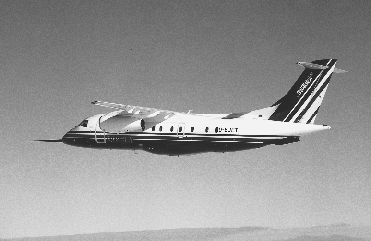
Ramon Lopez/WASHINGTON DC
Airline industry analysts are "unabashedly bullish" over the future of regional jet aircraft, which are expected to produce fundamental changes in the airline business over the next five years.
Merrill Lynch's Byron Callan says that 32- to 70-seat regional jets comprise "the most rapidly growing market segment" in commercial aviation, with estimated deliveries expected to increase by more than 130% from 1997 to 2000. Meanwhile, the US Federal Aviation Administration predicts a sevenfold increase in the number of regional jets flying in the USA, rising from 103 in 1997 to 769 in 2009.
Michael Gearhardt, Embraer's vice-president for marketing and product strategies, says there are 120 regional jets with 50-70 seats in service in North America and 220 to be delivered over the next seven years. "With 290 options in hand, it is not hard to imagine that there could be 1,200-1,300 regional jets operating in North America within a decade," says the Embraer executive.
TURBOPROP WORKHORSES
The US Regional Airline Association reports, however, that only 5% of the total of 2,104 aircraft operated by its membership last year were regional jets. Despite the current love affair with jets, turboprops are expected to continue to be the workhorse for the industry, with 60% of the regional airline fleet still expected to be turboprop powered by the year 2008.
The 30-seat regional jet field is limited to two types which have yet to enter service: Fairchild Dornier's 32-seat 328JET and Embraer's 37-seat ERJ-135. The $11 million 328JET, a turbofan-powered version of the 328 turboprop, was flown on 20 January and is scheduled to enter service during the first quarter of 1999.
The first prototype ERJ-135 will be rolled out on 12 May at Embraer's corporate headquarters in Sao José dos Campos, Brazil. The aircraft is priced at $12 million, and deliveries will start in July 1999.
Both aircraft were launched in response to demand by European and US regional airlines.
Fairchild Dornier has won 38 firm orders and options, including six orders from four customers for the 27kN (6,100lb)-thrust Pratt & Whitney Canada PW306B turbofan-powered 328JET in executive jet and air ambulance configurations.
The company holds six orders from French launch customer Proteus Airlines and four firm orders, with four options, from Aspen Mountain Air. Fairchild Dornier plans to deliver 20 328JETs in 1999, and to build production to 48 a year by around 2000. Company officials predict a market for as many as 600 328JETs.
Embraer holds 73 firm orders and 122 options for its new shortened derivative of the 50-seat ERJ-145, powered by derated Allison AE3007A3 turbofans. Business Express is the first US airline customer for the ERJ-135, with 20 orders and 40 options worth $810 million, and has since been joined by Continental Express which has signed up for 25 firm and 50 options. Other customers include France's Flandre Air (eight orders and 12 options) and US lessor Wexford Management (20 orders/20 options). 20 ERJ-135s will be delivered in 1999 with production then rising to nearly 50 a year.
Continental Express, which last year flew the world's first revenue services with the ERJ-145, will also be North American launch operator of the smaller aircraft. The move into the 30-seat jet market comes as part of its strategy ultimately to operate an all-jet fleet. American Eagle, which has already bought ERJ-145s, is less clear about its intentions. Reportedly looking for 75 firm orders and 75 options, Dan Garton, American Eagle's president, says that the case for a 30-seat regional jet has yet to be made.
NEW MARKET POTENTIAL
Analysts say the 30-seat regional jet may create new markets, much as the 50-seat regional jet did in 1995-6, if the new aircraft prove to be economical to operate.
Although production of the 35-seat Saab 340 and 50-seat Saab 2000 will be terminated, 262 Saab 340s continue to fly in the USA. Henrick Schroder, president of Saab Aircraft of America, believes that many of those twin turboprops will remain in US airline service for many years to come, or will find new homes outside the USA, such as in Latin America. Schroder says that 30/40-seat regional jets will be uneconomical to operate and thus poor turboprop replacements, but he believes that they will create new markets such as long, thin routes.
As a result, Schroder believes that "-there is life after death" for the Saab 340 and Saab 2000 in the USA and elsewhere.

Source: Flight International























